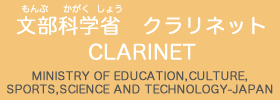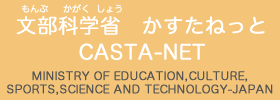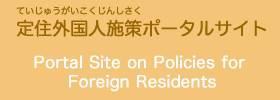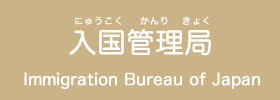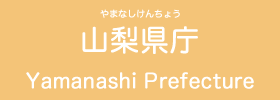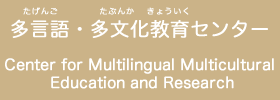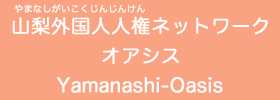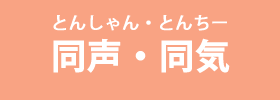
- Home >
- Information About Elementary and Junior High School Student Life >
- Elementary/Junior High School Rules and Student Life

| Student Uniforms (For Winter) |  | In junior high school, students are required to wear uniforms. Usually, students will wear their winter uniforms from October to May. |
| Student Uniforms (For Summer) | 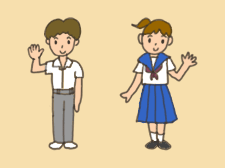 | From June to September, students will usually wear their summer uniforms. |
| Athletic Uniforms | 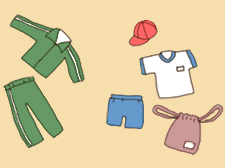 | Students are also required to wear an athletic uniform, of which there are summer and winter versions. In elementary school, students must also wear a reversible white/red cap. Some schools require that students wear their athletic uniforms when height and weight measurements are taken. |
| Indoor Shoes | 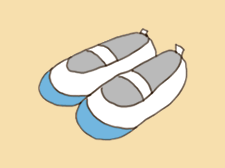 | All students are required to have a pair of indoor shoes for use on school grounds. Please change your shoes at the entrance anytime you enter the building. |
| School Rules | 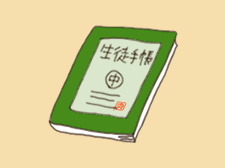 | In elementary school, students will receive a copy of the school rule handbook (gakkou no kimari). In junior high school, the rules will be written in the student’s own personal handbook (seito techo) ⇒Q1 |
| Traveling to School in Groups (Shudantoukou) | 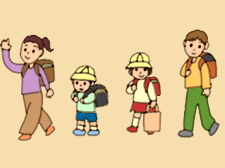 | In elementary school, students travel to school in groups (called “shudantoukou”). The schools decide the members of each group. |
| Leaving School (Gekou) | 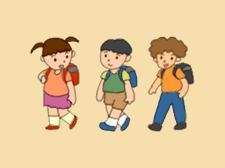 | When students leave school, they will sometimes do so in groups (called “gekou”). Usually, however, students will return home by themselves. |
| Commuting to School by Bicycle |  | In middle school, students who live far from the school can choose to travel by bicycle. If you choose to use a bike, please make sure to wear a helmet. |
| School Lunch | 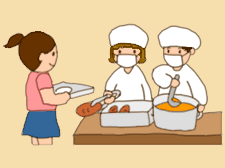 | In elementary and junior high school, lunch is provided. People in charge of preparing the lunch wear a hat and apron. The hat and apron are washed and returned after lunch is finished. |
| Bento Box (Japanese Style Lunch Box) | 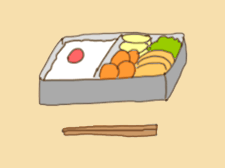 | On days when no school lunch is provided, schools will require that students bring their own lunch (usually a Japanese style bento box). Schools will contact families in advance to inform them about days when no school lunch is offered. |
| School Cleaning | 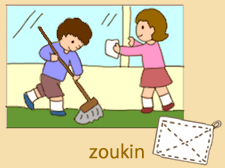 | All students must clean the school classrooms on a daily basis. At the start of the new semester, students must bring a special cleaning cloth called “zoukin” to participate in a full school cleaning. Students can either buy a zoukin from stores, or they can bring one from home that is hand made. |
| Report Card /Grade Report | 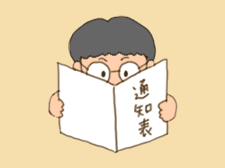 | Depending on the school, report cards/grade reports can have different names. Details about individual student performance can be found in these reports (e.g. grades, student behavior and study habits, performance in class and club activities, etc.)⇒Q2 |
| Testing/ Examinations | 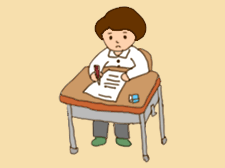 | In Japanese elementary and junior high schools, even when students perform poorly on their examinations, they will still move on to the next grade⇒Q3 |
| Student Council | 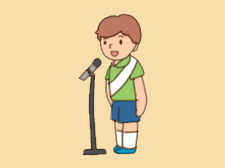 | Student council is available for students to join in both elementary and junior high school. In elementary school, it is called “jidoukai.” In junior high school, it is called “seitoukai.” The head of the student council is determined by vote.⇒Q4 |
| Parent-Teacher Association (PTA) |  | The PTA is also known as the “Hougoshakai” in Japanese. There is a PTA group for each individual grade year. ⇒Q5 |
| Student Grade /Evaluation Report |  | A record of each student’s performance is kept in the form of a student evaluation report (called “chousasho”). This report is written by teachers. When a student applies for admission into high school, this report is submitted to any schools that the student chooses to apply for. ⇒Q6 |
| Club Activities | 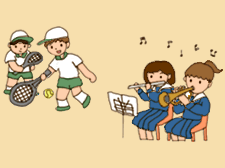 | In elementary school, there are certain club activities in which all students must participate in. However, other optional clubs are available if a student has interest doing a specific club activity. Club activities are also available in junior high school.⇒Q7 |
→ 2.Information About Elementary and Junior High School Student Life
→ ② Club Activities in Junior High School
→ ④ Frequently Asked Questions











